Wiki Project: Super '94 Q4
By Mento 1 Comments
Oof, you guys. Oofa doofa. The last quarter of 1994 saw a total of 189 unique releases for the Super Nintendo and Super Famicom. To put things in perspective, that's more games than the US TurboGrafx-16 (including all its TurboGrafx-CD/Duo CD games), the CD-i or the Neo Geo saw in their entire lifespans. It's about half the full library of the N64, a console that was in production for seven years, and we're only talking a three month period for a single video game console. Some more fun statistics: Of those 189 games, around 80 had blank or skeleton pages and 42 didn't have any pages at all. Needless to say, this particular segment of the Super '94 Wiki Project took a fair amount of time to complete.
Yet at the same time it's been a deeply satisfying crawl through the back catalog of one of the most important video game consoles of my childhood. I've discovered no small number of almost entirely forgotten SFC games which deserved to be remembered, as well as what feels like a thousand awful licensed games and pachi-slot/pachinko sims which were probably better off consigned to oblivion. In 1994 the SNES/SFC was in its Silver Age period: the highest concentration of game releases the system would ever see (the Super '95 Wiki Project will be around 70 games shorter) but a steady trickling down in the frequency of trailblazing paragons that the SNES was host to in its halcyon days. There's definitely classics to be found here - with a total of 486 games, the absence of anything decent would be statistically improbable - but we're edging closer towards the Super Nintendo's obsolence with the advent of the Sony PlayStation: released in Japan on December 3rd of 1994, within this update's three month period. (As was the Sega Saturn, on November 22nd.)
As with the previous three updates of this Wiki Project, I'm just going to take you through a handful of what I consider the most interesting games by what is admittedly a fairly loose definition of the term: games that were notable from a historical perspective, games that are too popular (or too infamous) to be ignored, and obscure games that I just thought were kinda neat for one reason or another. Rather than the previous system of featuring ten games and a handful of "honorable mentions" for each of the three highlighted months, we're bulking it up to a trio of top twenties without the honorable mentions. Given that October saw 47 releases, November saw 66 and December saw a whopping 76 there's no concerns about needing to pad these lists out at all.
(Usual disclaimer here: I'm only going by first releases. Many games were first released in one region and then released in another months later, and we're ignoring cases of the latter. The following games all saw their premieres in either Japan or USA (or, very rarely, Europe) in the months indicated. The other big disclaimer: While a few of these pages were created from scratch by yours truly, the majority of them were not. Credit goes to the various editors listed on each page in the order of the amount of points they earned. The wiki's a giant collaborative effort and I'm happy to contribute to it. Hug a Giant Bomb wiki editor today. Not me though; I gotta lie down after all this.)
(Incidentally, here are the lists for Wiki Project: Super '94 Q1, Q2 and Q3 if you want to see the full year's worth.)
October
The quiet before the storm, October sees a fairly hectic schedule but nothing like the respective holiday rushes of November (for US) and December (for Europe and Japan). The month of October actually saw the fourth highest concentration of new releases: March pipped it to third place by two games. Naturally, October's the perfect time for demons and horrors, and we'll be seeing plenty of both with the following list:
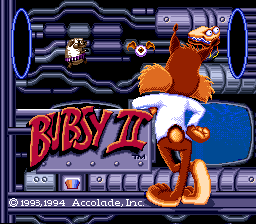 | Bubsy II: One of the horrors I was talking about. Bubsy II continues in the same vein as its predecessor, dropping its acerbic bobcat into a number of high-concept platforming stages in his endless quest for yarn balls and one-liners and inquiring into what misfortune could potentially befall him. I notice that they didn't even bother trying to come up with a jokey pun title for this one, possibly suggesting that the developers behind it were already starting to tire of its schtick. For lack of wanting to dwell on Bubsy any longer than I have to, I'm just going to leave you all with this quote from Bubsy creator Michael Berlyn, who was not involved with this sequel: "Bubsy II failed due to mismanagement of the character. It was done by people who, no matter how talented and interested they may have been, had not understood the original vision." No comment. |
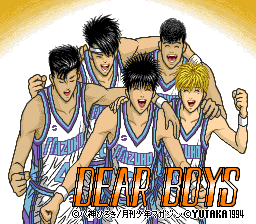 | Dear Boys: Now you might assume I chose to highlight this game purely for its title, and you'd be right. There was no shortage of anime basketball games for the Super Nintendo - the "From TV Animation: Slam Dunk" series would see three games between 1994 and 1995 - but I can imagine how many otome fans saw the name and the box art with all its androgynous teens standing around with their arms over each others' shoulders in team camaraderie and felt like they were suckered in by what is by all accounts a fairly slow-paced NBA knock-off. Actually, the game's dramatic cutaways and turn-based passing has a lot in common with another franchise of video game adaptations of a sports anime: the soccer-celebratory Captain Tsubasa, which itself saw a new entry in December (which I won't be covering here, incidentally, as it's the fifth game in a series I can barely comprehend). |
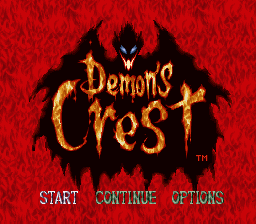 | Demon's Crest: Super Ghouls 'n Ghosts is regarded highly (with no small amount of Battered Spouse Syndrome, I imagine) for its colorful and challenging gameplay and great presentation, but it's not the best game in Capcom's Ghosts 'n Goblins to make it to the Super Nintendo. Rather, that honor goes to the quite excellent Demon's Crest, which follows on from the Game Boy Gargoyle's Quest spin-offs with its Red Arremer protagonist and non-linear exploration angle. While not quite as expansive as Super Metroid, there's a lot to see and do in this netherworld nonpareil, and it has to be one of the best looking games for the console. Best part about these beloved cult games is that I rarely have to do any work for their pages, so it's win-win. |
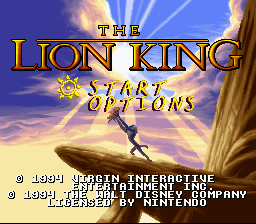 | Disney's The Lion King: Though not quite the revelation that Capcom's NES Disney licensed games were, the Virgin Interactive Disney games - which also includes Aladdin and The Jungle Book - were great looking games, if perhaps a little too convoluted with their level design. Fidelity to the animation quality of the movies seemed to be a higher priority for these games than attempting to innovate from a gameplay perspective, but given the general quality of licensed games from this era The Lion King was practically a highlight in the overpopulated 16-bit platformer genre. |
 | Dolucky no Puzzle Tour '94: We stop by our boy Dolucky for another curious attempt to boost his mascot power. Dolucky was originally introduced in Dolucky no Kusayakiu, a baseball game where he and his team of cats represented Coca Cola, and appeared again in the last one of these blogs in a soccer game. This one doesn't have anything to do with sports and is more of a block-crushing Bust-a-Move type puzzle game. It's actually kind of tough and demanding: blocks fly in from the top of the screen like so many tetrominos and you need to shoot appropriately colored blocks one at a time to remove them before they reach the bottom. This period of time saw a lot of minor variations of the "something drops from above" puzzle game format; a only slightly less common destination for licensed games than platformers and brawlers. |
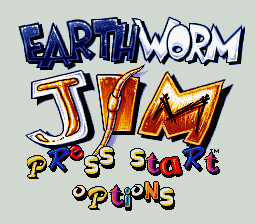 | Earthworm Jim: Shiny Entertainment made a fairly good advergame with Cool Spot but it was only when they were let off the leash to create their own madcap universe that they began to reap some well-deserved acclaim for their combining of surreal British humor and some very sharp run-and-gun gameplay in Earthworm Jim. Released in the same month as Bubsy II, I suppose it's entirely subjective whether you found Jim's "groovy!" mugging slapstick to be any more entertaining than Bubsy's pithy Looney Tunes-lite zaniness, though one got a two season animated spin-off while the other crashed and burned with its pilot. Just sayin'. |
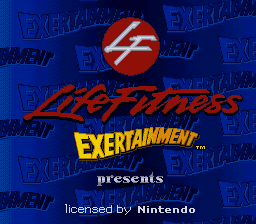 | Exertainment Mountain Bike Rally/Speed Racer: I got permission from the big guy to add this to the wiki: a two-game compilation that was released with an electronic stationary bike. The most expensive (and heaviest) Nintendo peripheral wasn't the Power Pad or the space bazooka; it was a Life Fitness brand exercise machine. Naturally, the two quickie racing games that were bundled with it were awful, but it's odd that one of them was a Speed Racer licensed game. I have to assume that game was already in the works, because in what universe is pedaling a stationary bike anything like driving the Mach Five? |
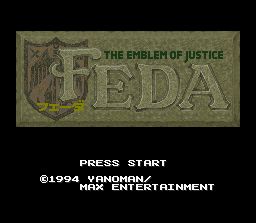 | FEDA: The Emblem of Justice: The SNES was often regarded the better of the two big 16-bit consoles when it came to RPGs, and rightly so with the likes of Final Fantasy VI and Chrono Trigger, though that sentiment doesn't quite extend to tactical RPGs. Sega's Shining Force games were very popular on both sides of the Pacific and the closest the SNES ever got to moving in on that territory was with the real-time Ogre Battle: The March of the Black Queen. The Super Famicom fared a lot better with its trio of Fire Emblems (that would be Monshou no Nazo, Seisen no Keifu and Thracia 776), Tactics Ogre: Let Us Cling Together, Bahamut Lagoon and some less well-known but still solid games like FEDA: The Emblem (gosh, how subtle) of Justice here: a game comprised of a combination of traits commonly seen in Fire Emblem (e.g. cutaway animations for battles) and Shining Force (e.g. beastmen and centaur units). It's a shame it never got its shot in the US market, but there's a fan translation that's floating around out there. |
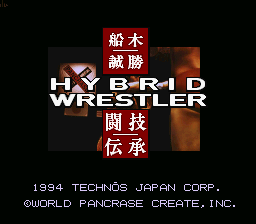 | Funaki Masakatsu Hybrid Wrestler: Tougi Denshou: I generally don't remark on the professional wrestling games I've worked on because I really have no affinity for that whole enterprise, but Hybrid Wrestler is an odd derivative. Focusing on the MMA-esque "pancrase", wrestlers and other martial artists fight each other in arenas as odd as a towering stack of wrestling rings and a raised pillar in the opulent foyer of some death game-sponsoring aristocrat. In both those cases there's a way to instantly end the match by forcing the opponent to plummet to their doom. Maybe this game was an attempt by the titular Masakatsu Funaki - who also co-founded the pancrase circuit - to convince the world that pancrase was serious business. |
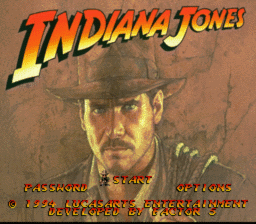 | Indiana Jones' Greatest Adventures: JVC published this take on the original Indiana Jones trilogy around the same time they published the final part of the Super Star Wars trilogy, and in many ways the two games follow a similar philosophy: while ensuring that the sound and graphical fidelity were very close to the movies, they simultaneously take enormous liberties with the source material by having exciting sequences and never-before-seen monsters shoehorned into every scene. Would The Last Crusade have ended better if Indiana Jones was forced into a boss fight with the demonic skeletal form of Walter Donovan rather than simply winning the day because he bothered to read a history book? Difficult to say. Actually, I just don't want to give Spielberg and Lucas any ideas when they inevitably decide to "Special Edition" those movies (well, except I guess that'd be Disney's prerogative now. I wonder what they'll do with that franchise? Make another one and give the starring role to Chris Pratt? Seems to be the present trend). |
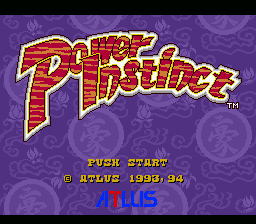 | Power Instinct: Power Instinct somehow manages to be a nonsensical title and the most generic fighter game title at the same time, but Atlus' subtly parodic take on the 2D fighter craze of the 90s got a middling but promising start with its first game. Gouketsuji Ichizoku, as the game is known in Japan, would continue to hold up a funhouse mirror to Art of Fighting, Fatal Fury, Street Fighter II et al with more ludicrous character designs and various sly digs at what their competitors were doing. They even had their own Dan Hibiki, which is impressive bit of recursion given Mr. Hibiki himself is a parody. |
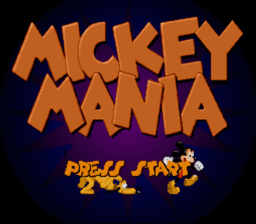 | Mickey Mania: Continuing a string of surprisingly decent Disney licensed platformers, Mickey Mania did what Epic Mickey would do so many years later and celebrate Mickey Mouse's long tenure in animated features to stage a series of chronological areas based on his various works, from 1928's Steamboat Willie to 1933's Mad Doctor to the then-recent Prince and the Pauper movie adaptation. I'd be remiss to not also mention The Great Circus Mystery Starring Mickey & Minnie released the same month, another great Capcom Disney platformer which allowed players to assume the role of Minnie Mouse as well. Both look and play great, which ought to be no surprise to anyone who had been following Mickey's interactive exploits since Castle of Illusion. |
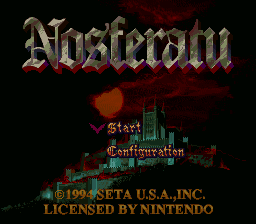 | Nosferatu: While superficially resembling a lesser Castlevania clone, Nosferatu is actually more akin to Prince of Persia with its acrobatic puzzles and traps and stringent time limit. The player character Kyle has to make it through Nosferatu's castle and save his fiancée Erin before she gets turned irrevocably into a terror of the night. That also means contending with other classic Universal Horror movie villains like the Wolfman and Frankenstein's Monster. Kyle can get stronger by finding colored crystals, usually well-hidden or difficult to reach, but wasting too much time bracing himself for the challenges ahead might just render his quest moot in the process. I'll admit, I hadn't heard of this game until I started working on the page, which happily dovetailed with the recent translation of its GameCenter CX appearance. |
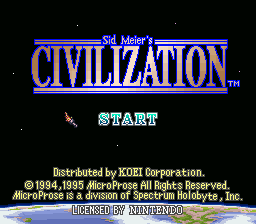 | Sid Meier's Civilization: PC games don't generally make for particularly faithful SNES adaptations - I vividly, bitterly recall getting burned on the SNES versions of Theme Park and Worms - but they managed to get Civilization to fit on a 16-bit cart somehow. The maps are a little smaller and the interface is kind of a mess, but it's a workable recreation. It also creates its own SNES-specific storyline to set the game up in which an E.V.O.-esque nude Goddess leaves the planet in the player's care. I'd say it was far closer to the Super Nintendo's remarkably solid SimCity port than the usual down-scaled PC port catastrophe. |
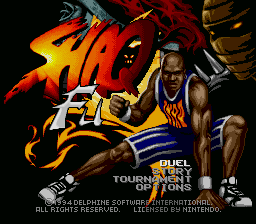 | Shaq Fu: Talking of catastrophes, Shaquille O'Neal managed to convince (or intimidate) a team of developers into pitting him against various inter-dimensional aliens and cat people to prove not only his superiority in b-ball but also with his mystical "Shaqido". You almost have to admire the ludicrousness of the game's premise and its utilization of the star power of a very tall man who is good at basketball, especially where most basketball stars would've been happy headlining an actual basketball game. Well, except for Michael Jordan, but we'll get to that guy in just a moment... |
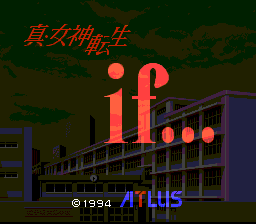 | Shin Megami Tensei If...: A Shin Megami Tensei spin-off and a proto-Persona of sorts, If... sets the demon hunting and negotiating action of Atlus' macabre RPG series entirely within a highschool that has been sucked into a demonic realm. Each of the game's areas represents one of the deadly sins, so you can expect a lot of sunshine and rainbows with this particular entry. If... has yet to be localized, but Japanese-to-English experts Aeon Genesis are almost done with their translation project. |
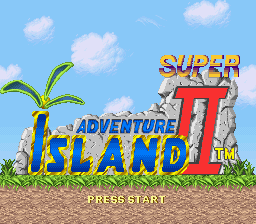 | Super Adventure Island II: The portly man in the hulu skirt Master Higgins is once again tasked with saving the day after he wakes up on another distant island absent his memories and his newlywed paramour Tina. Rather than the standard side-scrolling and skateboarding action of its antecedents, Super Adventure Island II feels more like Super Metroid or StarTropics in how it'll have the player walking around an overworld figuring out where to go next and acquiring useful items to unlock new locations (or new areas within locations) along the way. It was also the last Adventure Island game, at least until a 2009 WiiWare reboot. |
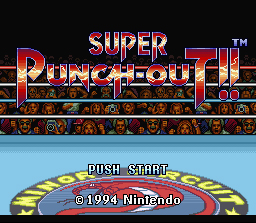 | Super Punch-Out!!: Super Punch-Out!! followed in the footsteps of its light-footed forebear by creating a rogue's gallery of oddballs and the means to beat the seven bells out of them via the game's timing-based ducks and weaves and hooks and jabs. The game exaggerated the already cartoony and expressive boxers of Mike Tyson's Punch-Out!! using their Looney Tunes elasticity to really hammer home the physical power of Little Mac's punches. |
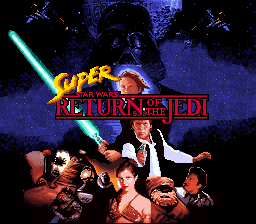 | Super Star Wars: Return of the Jedi: The aforementioned third part of the Super Star Wars trilogy. These games have a reputation for being a bit too busy and difficult, but you can't fault their presentation. Return once again brings back the series' customary character-select options and sound quality, adding a particularly vertiginous first-person pursuit through the Death Star. There's also a whole bunch of bosses that don't appear in the movies, but then that's sort of a series trademark too. |
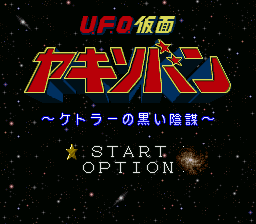 | UFO Kamen Yakisoban: Kettler no Kuroi Inbou: A brawler featuring a superhero based on Nissin brand ramen. You go around beating up other enemies based on instant food before taking on the final boss, who wears a kettle on his head. And is called Kettler. Why are Japanese advergames so much better than ours? Naturally with a premise like that, the game doesn't take itself particularly seriously and it's another case of a Japanese brawler that kind of doubles down on the background nonsense in lieu of innovative gameplay. Remember when the Bomb Crew played Ninja Baseball Bat Man? It's that but with instant noodles. |
November
November is the US holiday rush, as previously stated, and so the majority of the new releases this month originated from the United States. US-made games from this era tended to be either annual sports games, racing games or licensed games, and for the thirty-eight Super Nintendo games that debuted in the US during November 1994 that stands true for all but ten of them (eight, if you're confused enough to count professional wrestling as a sport). While this was definitely one of the hardest months to work my way through due to the sheer tedium, there are at least enough standouts for a twenty-strong list:
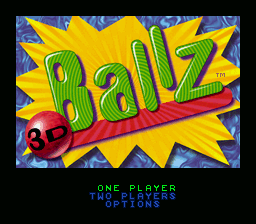 | Ballz 3D: I dunno, if you wanted to fight a bunch of weirdos comprised entirely of spheres, I'm not sure why you wouldn't go with a Treasure game instead of Ballz 3D. Ballz does at least do a remarkable job in how efficiently it informs the player of both the game's artistic value and sense of humor with its two word title alone. The first few steps towards polygonal gaming were definitely awkward ones. |
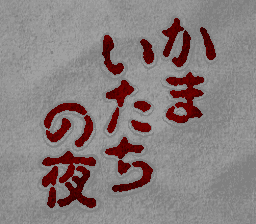 | Banshee's Last Cry: Known as Kamaitachi no Yoru in Japan, this is the second of ChunSoft's "sound novels" and easily its most popular if all the sequels and spin-offs are anything to go by. The sound novel games are essentially visual novels but with an added emphasis on ambient soundtracks to set the mood, which is almost always of a supernatural thriller nature. Players read the story and occasionally make decisions whenever a branch in the narrative appears; these branches have a "choose your own adventure" effect that changes the course of the story and occasionally leads to early game overs. It's actually not a million miles away from what Until Dawn's doing at the moment. |
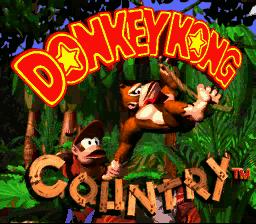 | Donkey Kong Country: Requiring no introduction, Rare's reboot of the surly simian takes him away from the world of humans and posits the sort of island paradise filled with bananas and lush jungle environments that's more an homage to the first half of King Kong than the second half. Noted for the pre-rendered model sprites and its fantastic David Wise soundtrack, the game's an imaginative platformer that doesn't shy away from challenging the player via its insidious minecart levels and other stages built around tricky gimmicks. The game would end up being the basis of every Donkey Kong appearance to come. Odd to think that UK developers are responsible for both Star Fox and the modern Donkey Kong. |
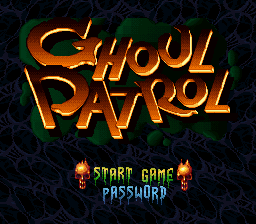 | Ghoul Patrol: The sequel to the excellent top-down B-Movie love letter Zombies Ate My Neighbors is more of the same in most respects, expanding the game's exploration of horror movie tropes to also include hopping through time and space to fight monsters in feudal Japan and medieval Europe. Though it adds new mechanics like slides and jumps, it's also a bit more muted than its colorful predecessor and considerably shorter: the game was rushed to meet the holiday release schedule. Still, it's a worthy enough sequel, though one that most people tend to ignore for its superior ancestor. |
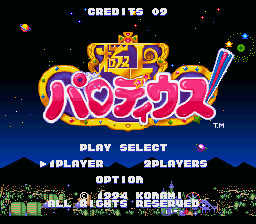 | Gokujou Parodius: I'm not one to judge the comparative merits of one shoot 'em up from the previous, as I find the genre a little too hardcore, but Gokujou Parodius ("Fantastic" or "Ultimate" Parodius) has changes that even I am able to appreciate. The biggest of these is the inclusion of even more characters from Konami franchises of old, with the additions of the genius babies of Bio Miracle Bokutte Upa, the rapscallion Kid Dracula and the comedy duo of Goemon and Ebisumaru for the game's Super Nintendo port. It also escalates the in-game insanity, but then so does every successive Parodius game. |
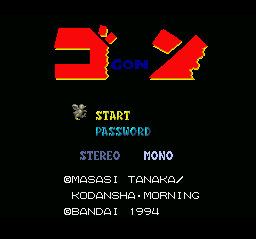 | Gon: Everyone's favorite tiny fire-breathing dinosaur from Tekken 3 had his own Super Famicom vehicle years before the Namco fighter. While a fairly generic platformer, it does have a few of the comedic qualities of Gon's wordless manga, including a fairly novel approach to a game over state: rather than being killed or knocked unconscious by the foes he faces each hit Gon takes simply makes him more angry. If he gets pissed off enough, he'll destroy the entire planet in a temper tantrum rendering the game uncompleteable. |
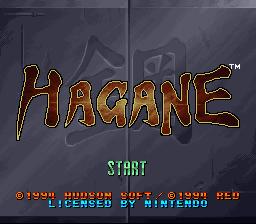 | Hagane: The SNES had a reputation of being the happier and brighter of the two warring 16-bit consoles, featuring more games with cartoon characters and pastel colors, but the SNES was entirely capable of grimdark badassery as well. Hagane, the story of a mechanical ninja who sets out to avenge his murdered clan, is filled with gritty backdrops that combine Japanese folklore and near-future technology and the gameplay is of a reflexes-heavy Ninja Gaiden/Strider bent. It's a balls-to-the-wall cavalcade of explosions and robots and ninja stars and bosses that take up the whole screen. Maybe it's lacking some polish, but it's hard to play a game that's as boisterous as Hagane without a smile on your face. |
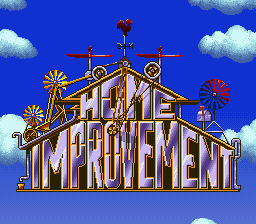 | Home Improvement: One of the many Super Nintendo licensed games that has gone down in history for its notorious poor quality. Home Improvement isn't actually too bad - it looks fine and controls well enough - but the subject matter is so far removed from anything you might expect to build a video game adaptation around. In an ironic twist, Tim Allen is busted for not being in possession of something expensive and illegal, and chases after a set of stolen prototype power tools before the tool manufacturer sponsor of his TV show gets wind of it and takes their custom elsewhere. In a stunning contrivance, these power tools are spread across the filming sets of neighboring TV shows to give players some thematic variation between stages. |
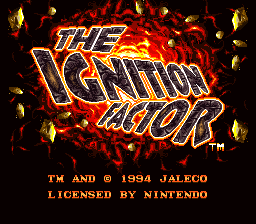 | The Ignition Factor: While the US didn't receive Human Entertainment's interesting Backdraft homage The Firemen, they did get this slightly lesser simulation of the busy life of a firefighter. Select the right equipment for the job and quickly save lives and put out fires in a series of burning building "scenarios". It's a novel enough premise - the only other game I can think of that's like it is the recent Indie game Flame Over - but it's a bit of a pain to run back and forth from where the fire is to where your replacement equipment (or alternative fluid, when putting out chemical/electrical fires) is kept. |
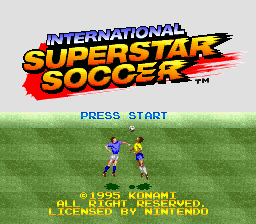 | International Superstar Soccer: Soccer games, like most sports games, are generally too dull to discuss in detail unless either I or my audience are particularly versed in the sport and can follow a discussion about how the minutiae added to each subsequent annual entry makes it better or worse than its predecessors and contemporaries. I'll make an exception for International Superstar Soccer because it's fairly notable for being the first proper Konami soccer game; making it the precursor to the Pro Evolution Soccer series that to this day continues to compete with EA's FIFA as the highest selling soccer game franchise. The money Pro Evo makes means it's probably going to be the last of Konami's franchises to join its brothers and sisters in pachinko/pachi-slot purgatory. |
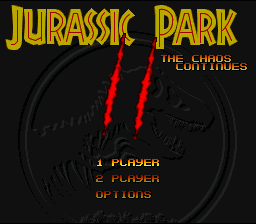 | Jurassic Park Part 2: The Chaos Continues: Loosely inspired by the first film, the video game adaptations of which did gangbusters for its publisher Ocean Software despite being several different flavors of mediocre, The Chaos Continues posits a plot where InGen's rivals swoop in to steal Jurassic Park's bio-genetic advancements from the dinosaur-infested island rather than trying to be subtle about it by entrusting Newman with a modified shaving cream canister. The game presents a number of scenarios that can be tackled in any order, but all that really changes is the setting and the dinosaurs you're likely to meet. It's for the most part a fairly generic side-scrolling run-and-gun. A Contrasaurus, if you will. |
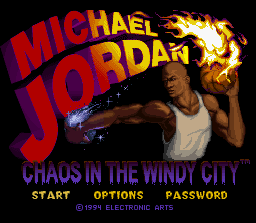 | Michael Jordan: Chaos in the Windy City: Not content with letting Shaq have his own magical adventure, this Michael Jordan game pits the Chicago Bulls legend against a diabolical mad scientist who creates monstrosities out of basketballs and has imprisoned all of Michael Jordan's teammates. To my lasting chagrin I actually wrote the game's sole walkthrough - you can go read it on GameFAQs - but I imagine my shame is considerably less than that of then-fledgling video game scribe Amy Hennig's, as this was her first known project. It's genuinely not that bad, really. The power-ups and non-linear level design at least give it some character. I suppose its most enduring legacy will be as the source of half the stolen graphics for the original Barkley, Shut Up and Jam: Gaiden. |
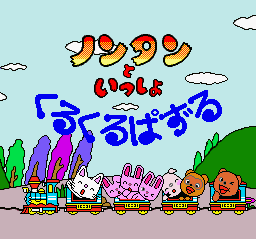 | Nontan to Issho: KuruKuru Puzzle: Another licensed block-busting puzzle game, though one that takes the blueprint of Mario & Yoshi and actually improves on it. Instead of just stacking symbols on top of each other, the player can also turn the symbols around: each side has a corresponding icon, from a fish that turns into a skeleton to an apple that turns into an apple core. This adds a level of complexity to the game, which isn't something I thought I'd write about a tie-in license game for an anime meant for preschoolers. |
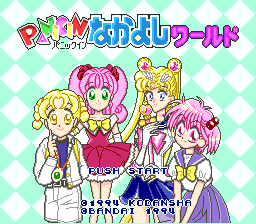 | Panic in Nakayoshi World: More anime license games. This was the month for license games evidently. This one pulls a Shounen Jump style "we have all these different manga properties, let's come up with some contrived way of throwing them all together" but does so with the library of Nakayoshi: a manga serial magazine featuring comics written for younger girls ("shoujo"). The game's not actually too bad either: it reminds me of something like Adventures of Lolo crossed with Gauntlet, in that you have to navigate a maze taking down monsters while keeping an escort character alive. A "game for girls" that didn't seem abjectly awful, and it came from Japan of all places. |
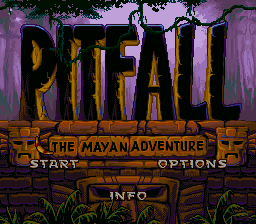 | Pitfall: The Mayan Adventure: My enduring memories of this 90s attempt to reboot Pitfall is the amount of promotion push it seemed to have. To that extent, it came out on almost every system under the sun at the time, from Windows to Sega CD to the Atari Jaguar. Opting to go with an animation-heavy platforming approach similar to Prince of Persia or Eric Chahi's games, The Mayan Adventure did OK both commercially and critically but I was never of the impression that it lived up to its considerable hype. I guess its publishers were really banking on how well people liked the original Pitfall. |
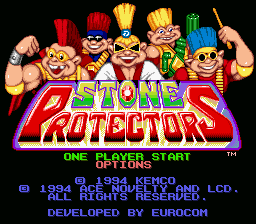 | Stone Protectors: Now here's a rare US licensed game in that I neither recognized the game nor its source material before it popped up on my itinerary. At some point in the mid-90s the producers of Trolls toys - the ugly crazy-haired goons that seem to drop in and out of fashion as frequently as virtual reality - decided that they didn't appeal to the young male demographic enough, so they relaunched them as gem-powered rock and roll stars with vaguely Asian martial art powers and weaponry. A real "designed by committee" effort. Considering I had never heard of the Stone Protectors before working on this page I'm going to go out on a limb and assume it didn't do so well. |
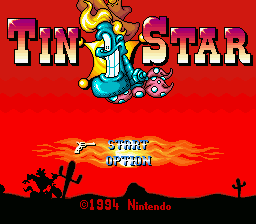 | Tin Star: Sunset Riders wasn't the only colorful and parody-heavy western game for the Super Nintendo - the Super Scope-enhanced (or you could use the SNES Mouse, which was kind of them) Tin Star, featuring a Dudley Do-Right mechanical sheriff and his robotic friends, seemed eager to poke at hoary western tropes while simultaneously being a faithful homage to the classic 30s adventure serials that established those same tropes. Mostly every stage is a shoot-out of some kind, whether you're gunning down hordes of robotic enemies Wild Guns style or trying to out-duel one of the game's antagonists in a shoot out. Honestly doesn't seem too bad, though I do have a soft spot for its developer Software Creations. |
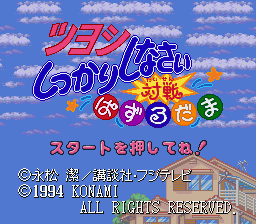 | Tsuyoshi Shikkari Shinasai Taisen Puzzle-dama: While I'm completely in the dark as to what Tsuyoshi Shikkari Shinasai might be (I wrote briefly on the manga's backstory on the wiki page, but I've already forgotten it) the game is at least remarkable for being the second of Konami's "Taisen Puzzle-dama (Battle Puzzle Ball)" competitive puzzle games: this series would end up being one of Konami's longest lasting, eighteen games in all from 1994-2011, and one that would often draw from various manga/anime licenses and Konami's own catalog of franchises (the PlayStation got a TwinBee-themed entry around the same time). It plays like a cross between Puyo Puyo and Super Puzzle Fighter 2, with a big emphasis on collecting a huge amount of junk from the other player and then creating a chain reaction that sends it all back with interest. |
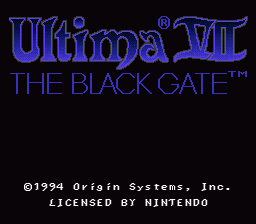 | Ultima VII: The Black Gate: The CRPG classics continue to emerge on the Super Nintendo, despite the platform being increasingly unable to handle the vast amount of data these games required. Ultima, at least, was never the most taxing CRPG franchise with its simple 2D top-down graphics and lack of any crazy big D&D ruleset. Even so, the PC Ultima VII was regarded highly at the time for its complexity and depth with an enormous (again, at the time) 20MB size. Given the SNES could only create 1MB carts in 1994, the Japanese publisher Pony Canyon - which had adapted a number of Ultima and Gold Box games for the Super Nintendo and other consoles - had to recreate a lot of the game from scratch. There's considerably less content, the combat's now all in real-time and the Avatar is alone in his quest instead of the party of hired NPCs he can roll with in the original. Apparently it still all kinda works, but I can't imagine any serious Ultima fan choosing this version over the PC MS-DOS one (well, unless they were so serious that they had to play every incarnation out there). |
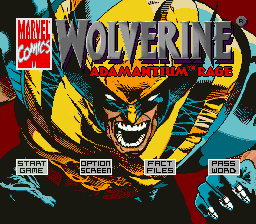 | Wolverine: Adamantium Rage: There were a couple of X-Men games produced this month, but I'm going to give the final spot on this list to Adamantium Rage. It's about as terrible as that Spiderman and the X-Men game - unfortunately emphasized somewhat by having the first few stages focused on running around a level with a quota of floating robotic things to destroy - but it was the first game I'm aware of to actually get Wolverine's mutant power right: by standing still, Logan's health very slowly regenerates. It's one of those features that I can understand dropping because it gives the player too much of an advantage, but having it regenerate about a percentile a second probably wasn't the best solution. Neither is setting a psychopathic little robot girl after Wolverine if he waits around a stage for too long. That's the other thing about this game: all of its bosses are taken from Wolverine's Weapon-X arc and his own various comic book mini-series, including such famous characters as "Albert", "The Hunter From Darkness", "Bloodscream" and the aforementioned "small wonder"-slash-atomic nuke "Elsie Dee". Y'know, those guys. (The other X-Men game, for the record, was X-Men: Mutant Apocalypse. More generic brawler shenanigans for the most part.) |
December
Here it is. December 1994. The busiest month in the Super Nintendo's entire lifespan. With 76 games we saw an approximate release rate of two and a half games per day, and that's just for the new stuff. Even after moving up to twenty featured games per month, it was hard to narrow down this list. Not impossible, exactly, as there was a huge amount of junk thrown down the chute to catch Christmas impulse shoppers unawares, but still challenging. Oddly enough, despite this being the month with the most Super Nintendo/Famicom releases ever, there's very few of what I would consider to be the Super Nintendo's biggest hits. Some decent and well-known games, but nothing monumental.
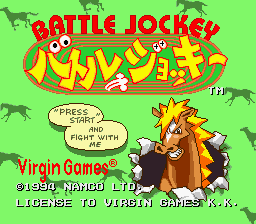 | Battle Jockey: Sometimes I'm adding a game I'm seeing for the first time and thinking "this is one of those insane party games that would be hilarious with a room full of drunken idiots", and then that thought naturally coalesces into "this would be awesome to see on UPF". Battle Jockey looks like a regular horseracing game, except it controls like R.C. Pro-Am (with that Epona style "letting the horse's stamina recover between speed boosts" mechanic) and is filled with random power-ups that do all sorts of crazy shit to the other riders. If you've seen those clips of wacky Japanese horseracing games where it looks like Keita Takahashi has taken over the reins, it feels a bit like that. Weirdest part? UK conglomerate Virgin Interactive put this out. In Japan only, naturally, but what were they doing over in Japan producing Super Famicom exclusive games? |
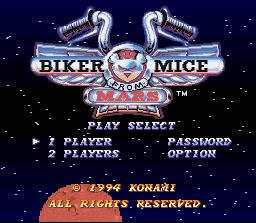 | Biker Mice From Mars: Those murinae Martians also got themselves an R.C. Pro-Am knock off of their very own, though I suppose more credit should go to Rock N' Roll Racing as the default sort of heavy metal attitude racing game the Biker Mice people are likely trying to rip off (when they aren't already ripping off the Ninja Turtles, at least). The three titular biker mice and three of their recurring villains race around an isometric track shooting at each other. It's not awful, at least? But it is a little limited. |
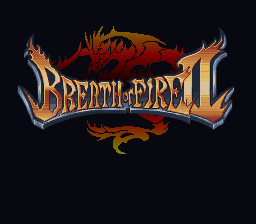 | Breath of Fire II: The first Breath of Fire apparently did well enough for Capcom to stick with it, creating this superior sequel that nonetheless suffered one of the worst professional translation jobs of any Super Nintendo RPG, pipping even "son of a submariner". Still, it did introduce the JRPG mainstay of a town you were able to build up and populate in your downtime, and I always liked any RPG that let me play SimCity for a while. It was generally bigger and better looking than its predecessor too, though I imagine being released on the same day as the Sony PlayStation didn't do it any favors if it was trying to wow people with its graphics. |
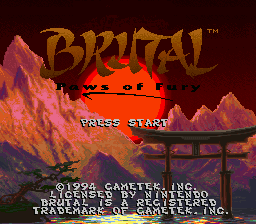 | Brutal: Paws of Fury: I really wonder if I should've used this slot for Ryuuko no Ken 2 (aka Art of Fighting 2) instead. The anthro fighting game has a very poor reputation but it still offered a few novel ideas, like having to learn supers before you could use them. Originally a Sega CD game, it didn't take much to squeeze it onto the Genesis and Super Nintendo, though I'm not sure if that's necessarily a positive. We'll just leave this as the sort of experiment everyone was putting together for their slice of the Street Fighter 2/Mortal Kombat II market and leave it at that. Sure was a time for fighters, for better and worse. |
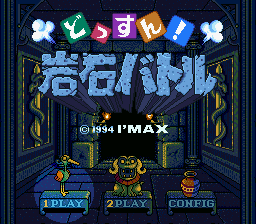 | Dossun! Gasenki Battle: Talking of overrepresented genres on this list, Dossun! is yet another falling blocks puzzle game. It actually reminded me a lot of those lo-fi pixel but addictive match-3 games from EightyEight Games: 10,000,000 and You Must Build a Boat. The game concerns a bunch of RPG heroes who have harnessed power stones to fight (but not those power stones), which essentially amounts to a match-3 game where destroying blocks of a certain type results in physical, magical and summoned attacks, or even healing draughts. Clearing blocks as quickly as possible puts you in better stead than your opponent, but there's also a level of strategy involved with chaining attacks together for more damage. The little RPG heroes are fighting each other the whole time this is happening too, like in Super Puzzle Fighter 2. "Competitive 10,000,000" means this is another SFC game I'd like to see on UPF someday. |
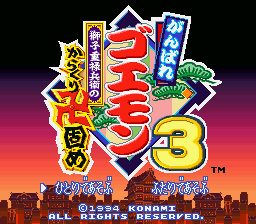 | Ganbare Goemon 3: Shishijyuurokubei no Karakuri Manji Katame: Word salad title, but the third Super Famicom Goemon game continues in the spirit of its immediate-but-one predecessor, better known to us as The Legend of the Mystical Ninja. From our perspective, it went straight from that early SNES game to the '97 N64 game Mystical Ninja Starring Goemon, adding a whole lot of elements and features that were actually gradually attached to the series in one of the games we never got to see. Playable robotic ninja Sasuke and Goemon's giant buddy Impact had already jumped on board the franchise with the previous game, but GG3 marks the first time that the ninja/mermaid Yae became playable. |
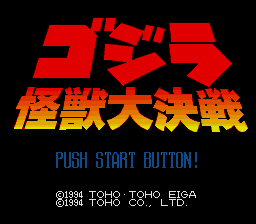 | Godzilla: Kaiju Daikessen: There aren't many decent Godzilla games out there and what few there are tend to be Japan-only, but Godzilla: Kaiju Daikessen ("Great Kaiju War") is one of them. Actually a sequel of sorts to a TurboGrafx-CD game I had the pleasure of working on fairly recently, Kaiju Daikessen pits Godzilla against some of his most famous foes as well as the new and improved Mecha Godzilla as he appeared in a then-recent movie reboot. This one actually made Biollante playable for the first time: the giant stationary plant monster was not considered to be an easy one to translate to a fighter game character. |
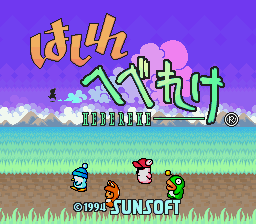 | Hashire Hebereke: More R.C. Pro-Am antics, if you can believe it. Hashire Hebereke puts the adorable mob of Sunsoft mascot characters in another contest, but this time of speed instead of strength (Sugoi Hebereke) or wits (Hebereke's Popoon). Adjusting for everyone's momentum as they take corners, players run around a course trying to hit a series of checkpoints before returning to the starting line to register the lap. Every Hebereke game seems to have the same plot: Hebe (the penguin in a beanie who is known in Ufouria as "Bop Louie") wakes up in a strange land and must defeat all his friends to find the way home again. Maybe if he stopped drinking so much he wouldn't have this recurring problem. |
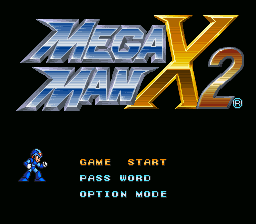 | Mega Man X2: Like our overlord Jeff, I never really got too deeply attached to the Mega Man X series. I didn't instantly dismiss them out of the gate either, but my nostalgia for Mega Man is largely second-hand: I recall watching my friend play his copy of 2 and 3 a lot and taking it turns with certain sections. You know the ones. The ones Dan complained about a lot in that recent Mega Man Legacy Collection QL. X2 seems every bit as competent as the first one but I imagine that, even at the time, people were thinking "oh, so we're going to get another five of these too, huh?". |
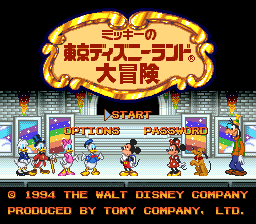 | Mickey no Tokyo Disneyland Daibouken: Really stacked these lists with Mickey Mouse games, didn't I? That wasn't intentional. This is a bizarrely self-obsessed Disney game in which Mickey Mouse goes to Tokyo Disneyland and has to check all the rides for the whereabouts of his friends after he discovers that Pete has taken the place over. The game is distinctive because it gives Mickey a combination water/helium pack (presumably the weight of one counteracts the anti-weight of the other) that he can use to create balloons of either type, which either raise him higher up or allow him to attack enemies. The game finds a few additional novel uses for this mechanic throughout its runtime, and it has the effect of being like a proto-Super Mario Sunshine. |
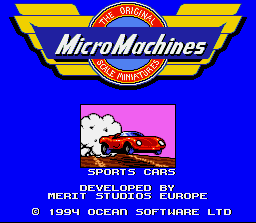 | Micro Machines: Top-down racing games were definitely a thing this year. Micro Machines saw its first Super Nintendo entry this month with all the macro universe shenanigans that the series is known for. I thought this game was the shit in my younger years, though I'm not sure how well that interruption-heavy scoring system has aged. Still, how many racing games had speedboat, helicopter, monster truck and tank courses? |
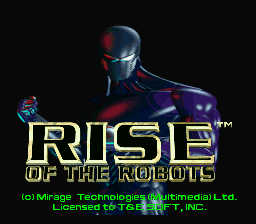 | Rise of the Robots: Ah, Rise of the Robots. I'll never forget how Queen guitarist and general cool guy Brian May attached himself to the project and got excited for it. My heart goes out to him. While there's no denying the level of craft that went into the game's polygonal models (turned into pre-rendered sprites, a la Donkey Kong Country and Killer Instinct) there's a distinct lack of any substance in the actual game design. It felt almost like some giant swindle: spend half the budget to make the game look great and pocket the rest by ensuring almost zero effort went into putting a stable of fighter characters together and try to hook as many people in as possible with its looks alone. It got a sequel, so I guess enough people fell for it. |
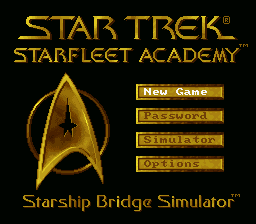 | Star Trek: Starfleet Academy Starship Bridge Simulator: There were a few Star Trek licensed games floating around at this point, but very few gave you strategic command of the bridge of a starship. Either you were zooming around a top-down view of space shooting down Klingon Birds of Prey or beaming down to a planet in an away team to chip away at unconvincing rock monsters with a phaser. Not to say that either of those things are incongruous with how 90% of the TV show went, but the best part of being a Starfleet captain was sitting in that big chair and telling everyone what to do. This game might've been a little too awkward to pull that off, especially on a console, but it was a step in the right direction. Also, do I really have to babysit a bunch of Academy weenies? |
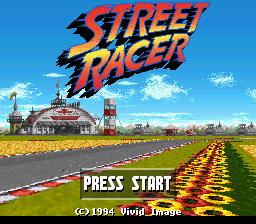 | Street Racer: This game was an earnest effort to tap into the chaotic racing fun of Super Mario Kart, though it left a lot to be desired. With the exception of the Turkish wizard Hodja, the characters were fairly archetypal and the main racing mode was sort of half-baked. Still, though, credit where credit is due: the Rumble mode is a great, manic time with friends (the game supported up to four players) and Street Racer came up with the idea of car soccer long before Rocket League did. |
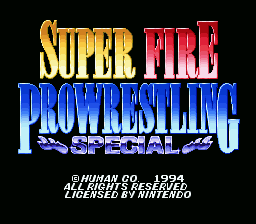 | Super Fire Pro Wrestling Special: If anyone knows anything about Fire Pro Wrestling is that Suda51 was the director of one of them and gave it a super dark plot where the hero kills himself at the end after gaining the belt and losing everything else. That would be this game: Super Fire Pro Wrestling Special. I guess the whole suicide plot would be the "special" part of its title. Beyond its story mode it's more isometric Fire Pro fun with a menagerie of fictional yet somehow familiar professional wrestlers. Weirdly enough, this month saw no less than three wrestling games and this is the only one with dudes in it. Joshi Wrestling was picking up in a big way over in Japan, evidently. |
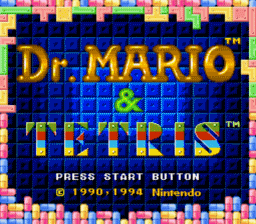 | Tetris & Dr. Mario: I guess the most unusual thing about this game is that it took this long for this compilation to happen. Nintendo's two best puzzle properties (I dare anyone to say different, even taking into account everyone's general ambivalence for Dr. Mario) coming together in such a way where not only do the two games undergo facelifts (though Tetris was last seen on the Super Nintendo halfway through the same month with the probably unnecessary Super Tetris 3) but can be played alternatively in a competitive mode. Similar to Puyo Puyo Tetris, one player on Dr. Mario can send garbage to the Tetris player and vice versa, or the two players can race through an alternating series of Dr. Mario and Tetris stages to be the first to the finishing line. The game stops just short of dropping tetrominos into Dr Mario's pill bottle, but I think that'd be too crazy to contemplate. Maybe I'll wait and see if NES Remix 3 can make that happen. |
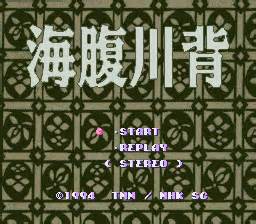 | Umihara Kawase: Perhaps my favorite game in this list, Umihara Kawase is a deeply strange game about a little schoolgirl navigating an abstract world of stationery and fish with nothing but an elastic grappling hook that can rappel her across each area to a number of exits both obvious and hidden. The player is restricted by their own skill and ballsiness, flinging themselves as quickly across as the levels as their nerves will allow. The game also lead to one of the best GameCenter CX episodes in memory, where the new AD Inoko MAX shocks the world for the first time with his complete incompetency. |
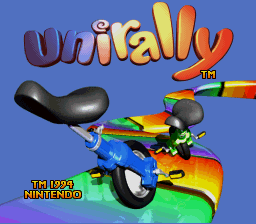 | Uniracers: Before, or perhaps concurrently with, Rockstar North was designing murder simulators they also tried their hand at unicycle stunt racing. Uniracers is a singularly bizarre 2D racing game that makes great use of striped colors to project the incredibly fast speeds of a pair of unmanned unicycles that zip through the air and loop-de-loops with a welcoming accessibility that was almost in defiance of the game's blinding sense of speed. Both fun to play and fun to look at, Rockstar would take this philosophy with them into their infectiously anarchic Grand Theft Auto series. They would then ignore it entirely by the late 00s in lieu of overly melodramatic plots about family, betrayal and redemption in a cartoon universe where the most popular internet cafe chain is called "Tw@". Boy, Saints Row really took their ball and ran home with it, didn't they? |
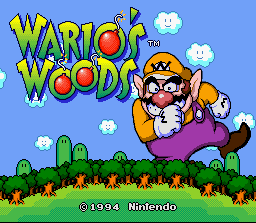 | Wario's Woods: Though this list is ostensibly about SNES games, Wario's Woods is best known is as the very last licensed NES game. With the end of this 1994 rundown, we also reach the end of the life of the Super Nintendo's pioneering ancestor. Let's not grieve its passing (it was twenty-one years ago, for one) and instead celebrate that not only was Wario seeing more air time in Nintendo games but Toad became a playable character for the first time since Super Mario Bros. 2. Sure, he was relegated to stacking junk in the middle of a creepy forest, but then Toad was always the one to go to for menial labor in SMB2. Sort of makes me wonder why there wasn't ever a The Settlers-style city construction game featuring the Mushroom Kingdom and its industrious fungi population. |
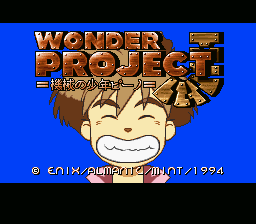 | Wonder Project J: Kikai no Shounen Pino: Our final spotlight of this feature shines down on Wonder Project J. As well as looking absolutely gorgeous, Wonder Project J is a novel take on an RPG in which you not only command your little hero to fight but to do practically anything. A characteristically Japanese take on the Pinocchio story, the player has to teach the protagonist Pino how to be a real boy by imparting on him the values of friendship and honesty, guiding him through a series of adventures and fetch quests while keeping him away from a shadowy Empire that wishes to take the technology powering him for their own twisted means. The developer Almanic is better known in the US for the oddball evolution RPG E.V.O.: Search for Eden, so they have a history of creating some ambitious and weird titles. |
And with that, Wiki Project: Super '94 is complete. My thanks to all the other Giant Bomb wiki editors who unknowingly contributed to this project with their earlier work and I'll see you all again with a new Wiki Project once I've recovered from this one.
Check back in a month or two.
At the earliest.
